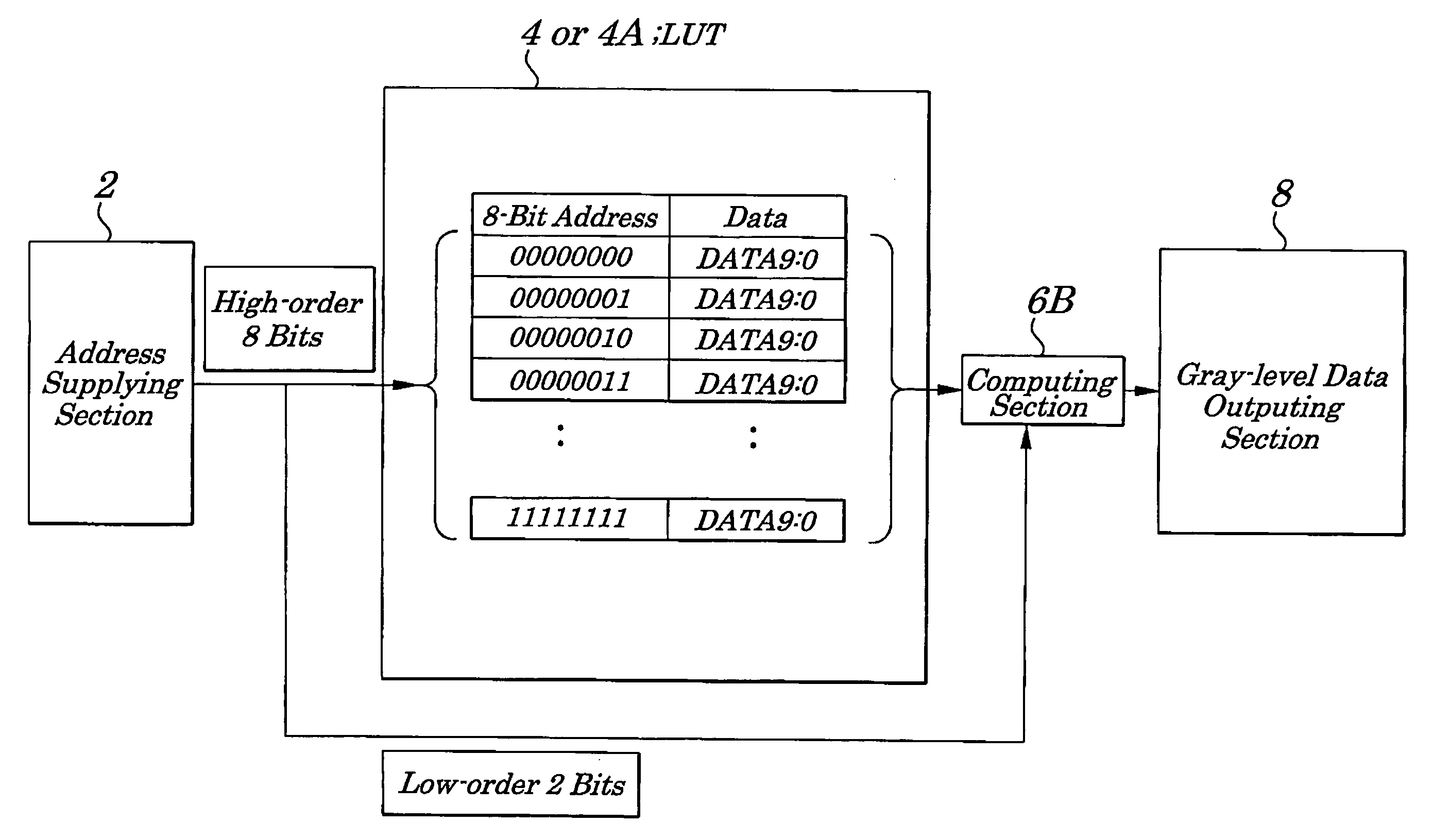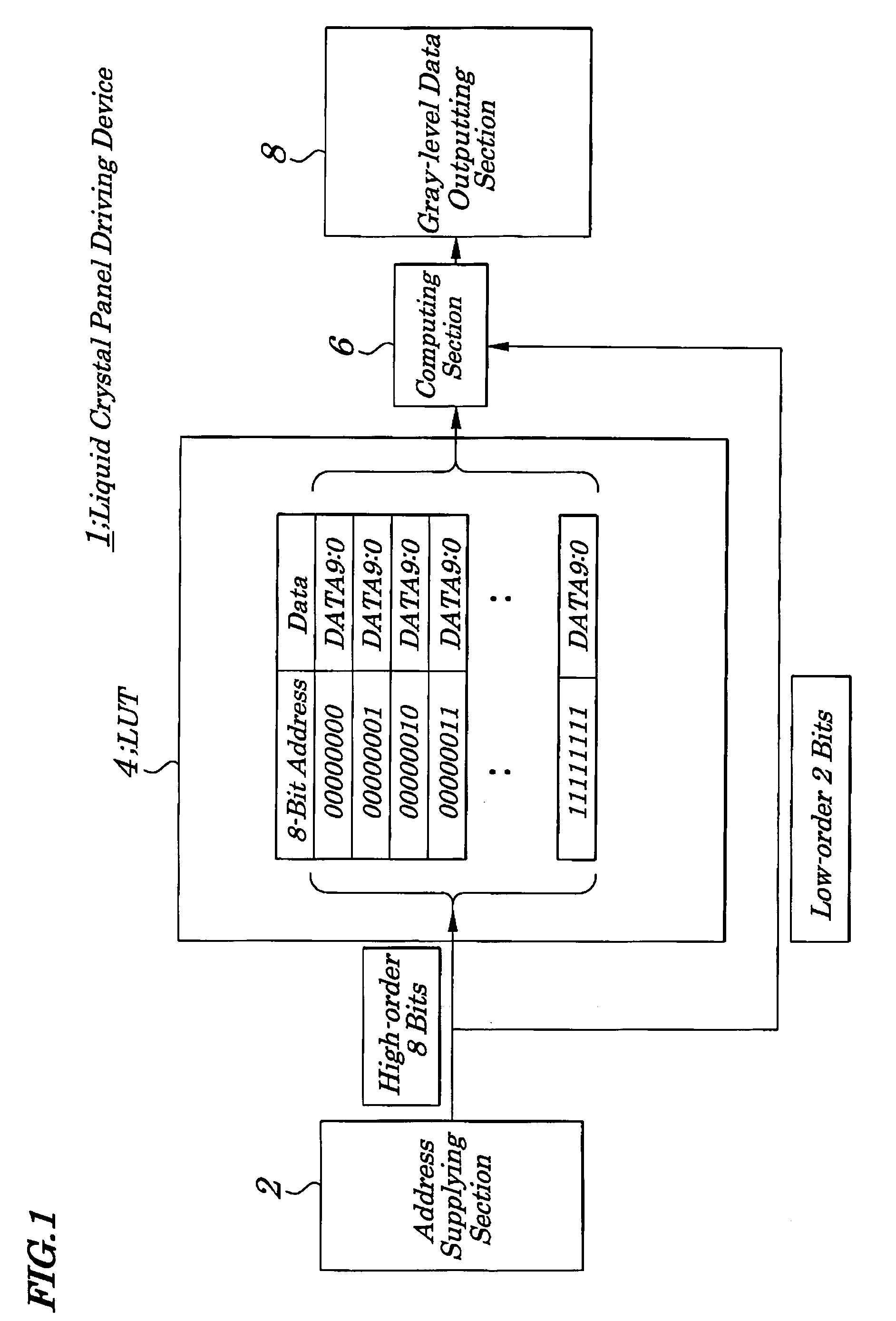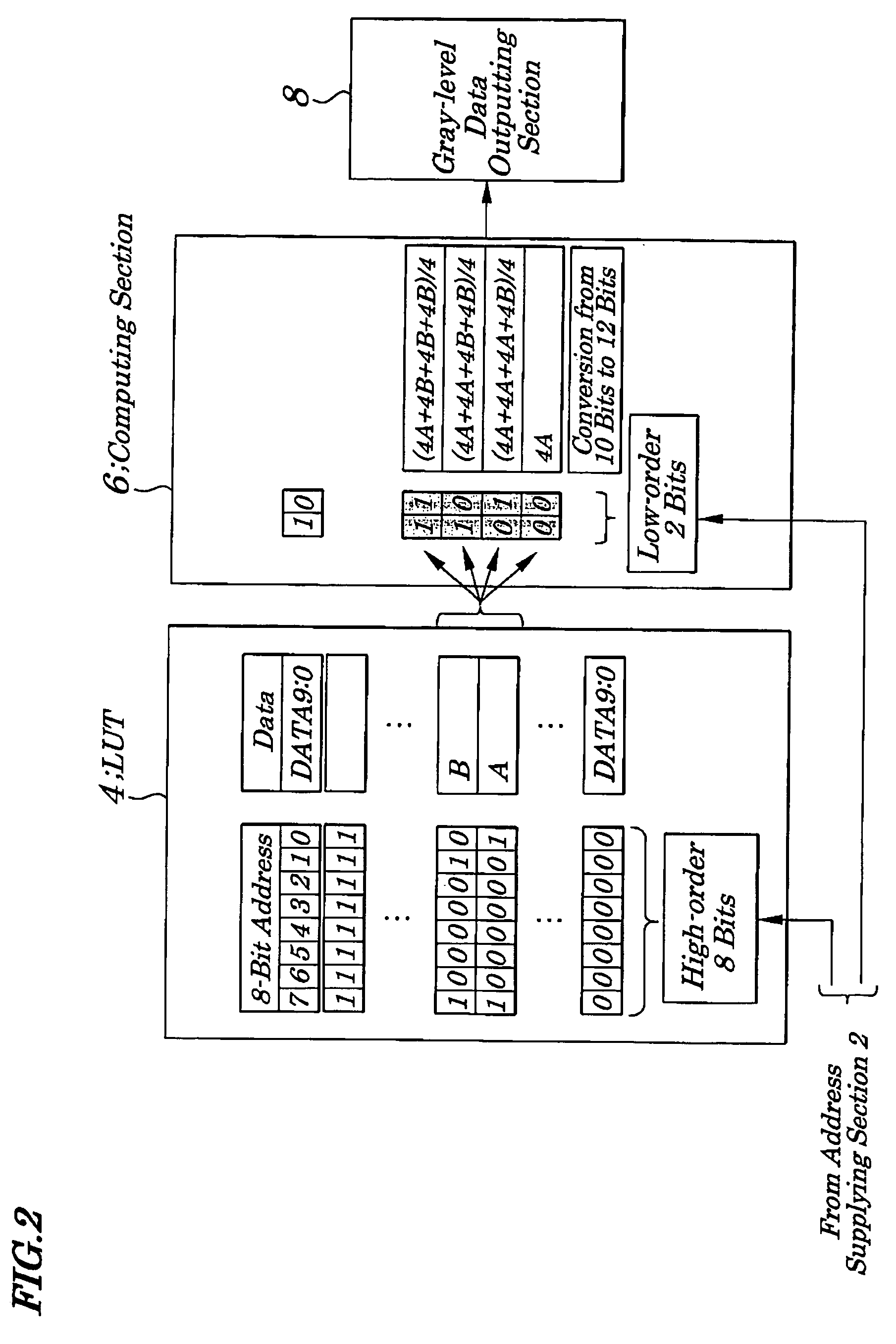Data outputting method, data outputting device, liquid crystal panel driving device, and liquid crystal display device
- Summary
- Abstract
- Description
- Claims
- Application Information
AI Technical Summary
Benefits of technology
Problems solved by technology
Method used
Image
Examples
first embodiment
[0071]FIG. 1 is a black diagram showing electrical configurations of a liquid crystal panel driving device making up a liquid crystal display device of a first embodiment of the present invention. FIG. 2 is a diagram explaining outputting of gray-level data produced by the liquid crystal panel driving device according to the first embodiment of the present invention.
[0072] The liquid crystal panel driving device 1, as shown in FIG. 1, includes an address supplying section 2, a LUT 4, a computing section 6, and a gray-level data outputting section 8 and operates so as to read gray-level data (hereinafter called “compressed gray-level data”) obtained by dropping low-order bits corresponding to high-order bits out of bits making up an address to be input and to high-order bits being higher by one than the high-order bits, from the LUT 4 and, by performing interpolation between two pieces of gray-level data (hereinafter called “expanded gray-level data”) obtained by expanding each of t...
second embodiment
[0088]FIG. 3 is a block diagram showing electrical configurations of a liquid crystal panel driving device 1A making up a liquid crystal display device according of a second embodiment of the present invention. Configurations of the second embodiment differ greatly from those in the first embodiment in that a LUT 4A is configured so that two pieces of data are read by the same clock.
[0089] That is, the liquid crystal panel driving device 1A according to the second embodiment, as shown in FIG. 3, uses a memory that performs a double edging operation for the LUT 4A. Configurations other than described above are the same as those employed in the first embodiment and same reference numbers are assigned to components having the same function as those in the first embodiment and their descriptions are omitted accordingly.
[0090] Next, operations of the second embodiment are explained by referring to FIG. 3. Operations other than described below are the same as those explained in the firs...
third embodiment
[0094]FIG. 4 is a block diagram showing electrical configurations of the liquid crystal panel driving device 1B making up the liquid crystal display device (not shown) according to a third embodiment of the present invention. FIG. 5 is a diagram showing configurations of a computing section of the liquid crystal panel driving device 1B according to the third embodiment. Configurations of the third embodiment differ greatly from those employed in the first or second embodiment in that expanded gray-level data of a pixel that existed one frame before is taken into consideration when expanded gray-level data of a targeted pixel is produced.
[0095] That is, in the liquid crystal panel driving device 1B of the third embodiment, as shown in FIGS. 4and 5, a computing section 6B is made up of a main computing section 6B1 being equal to the computing section employed in the first or second embodiment, a delay creating section 6B2 to create a delay of one frame time for expanded gray-level da...
PUM
 Login to View More
Login to View More Abstract
Description
Claims
Application Information
 Login to View More
Login to View More - R&D
- Intellectual Property
- Life Sciences
- Materials
- Tech Scout
- Unparalleled Data Quality
- Higher Quality Content
- 60% Fewer Hallucinations
Browse by: Latest US Patents, China's latest patents, Technical Efficacy Thesaurus, Application Domain, Technology Topic, Popular Technical Reports.
© 2025 PatSnap. All rights reserved.Legal|Privacy policy|Modern Slavery Act Transparency Statement|Sitemap|About US| Contact US: help@patsnap.com



